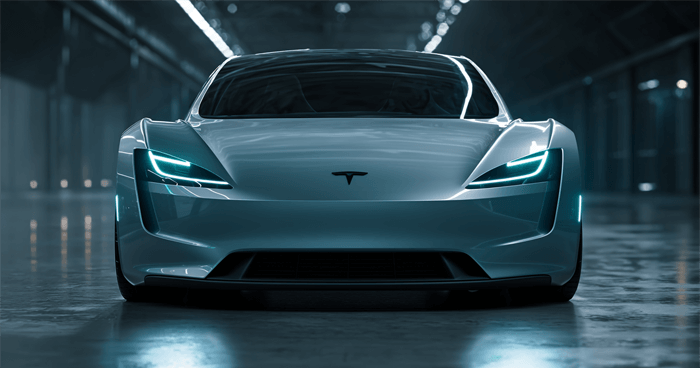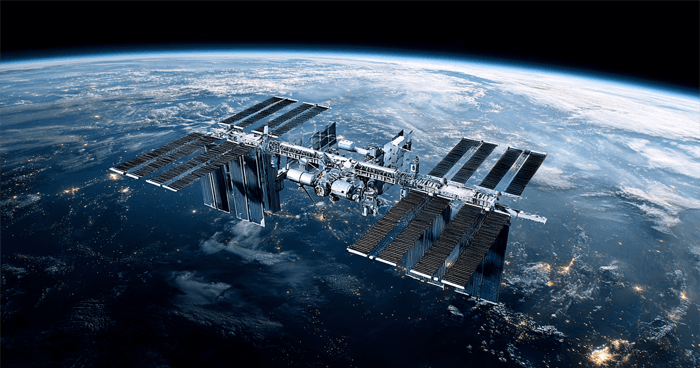
The Advent of Autonomy
Tesla’s profitability really caught Wall Street analysts off guard…

Editor’s Note: Expert trader Larry Benedict predicted the 2020 crash and the 2022 crash – and he had one of the best years of his life in 2008. Now he’s coming forward with a new prediction… Only this time, he’s not predicting a crash.
Due to a rare market event that’s only happened four times in the last 40 years, he believes we’re about to enter a “Chaos Period” as early as November 7 – just two days after the election.
Not only is Larry expecting it, but he’s been through it before – and he knows what to do to thrive in the chaos. That’s why he’s releasing an urgent interview on Wednesday, October 30, at 8 p.m. ET.
To learn about his blueprint, make sure to tune in… You can register for free right here.

It’s pretty unusual for us to explore an earnings announcement in The Bleeding Edge.
That’s typically what we cover in our portfolio reviews for our investment research products.
But every once in a while, we’ll see something special worth digging into. And it’s rarely about the headline numbers that Wall Street loves to report on…
The substance, the most interesting insights, tend to come out in the Q&A section.
And that was the case with yesterday’s Tesla Q3 2024 earnings call…
A Sentiment Reversal
The market and press negativity over the last two weeks – that followed Tesla’s We, Robot event on October 10 – made the earnings call that much more enjoyable. We reviewed that event and its meaning in The Bleeding Edge – The Future Should Look Like the Future.
Some of my favorite media quotes that I shared in that issue were:
Tesla’s big ‘We, Robot’ event criticized for ‘parlor tricks’ and vague timelines for robots, Cybercab, Robovan…
— VentureBeat
Elon Musk Lost $15 Billion After Tesla’s Cybercab Reveal
— The Verge
Tesla stock sell-off after robotaxi event could be just the beginning, pros warn…
— Yahoo! Finance
Aaaah, we better watch out. After all, the “pros” warn…
All of the negativity ended up driving Tesla’s stock price down 11% since the We, Robot event.
But since the earnings call yesterday, the naysayers are probably feeling a bit stupid right now.
The financial media regurgitated the headline figures like:
- Q3 Earnings per share: 72 cents versus consensus of 58 cents
- Q3 revenue of $25.18 billion versus consensus of $25.37 billion
- Q3 free cash flow of $2.74 billion
- Q3 revenue grew 7.8% year over year
In other words, a fantastic quarter, especially for those who have been predicting a downfall.
After the market closed, Tesla’s share price skyrocketed as much as 14.5%. And the stock opened up 15% this morning.
Tesla’s profitability really caught Wall Street analysts off guard.
Industry Funded
The drivers for the “unexpected” profits are worth noting:
- Lower cost of manufacturing per vehicle
- Growth in energy generation and energy storage (i.e., solar panels and large batteries)
- Higher full self-driving (FSD) revenue recognition – FSD uptake has been increasing dramatically in the last few months given the quality of the software
- Increase in vehicle deliveries
- Higher automotive regulatory credit revenue of $739 million
- Reduced average selling price of Tesla Model S, 3, X, and Y vehicles – Tesla continues to make progress to bring down the price of its EVs.
The most ironic contributor to the profitability was the $739 million in automotive regulatory credits.
Automakers are required by regulations to “earn” or purchase a certain number of clean energy credits every year. This can be done by producing and selling electric vehicles (EVs) or by purchasing those credits on the market.
And because a) Tesla only produces EVs and b) it is the most successful EV company in the U.S., it has an excess of those credits.
How can we not get a laugh out of the incumbent and inefficient automotive industry paying Tesla for its clean energy credits? Paying it to get better and better.
Tesla is making so much money from selling its credits – because it is the most successful EV company in the industry – I could make an argument that the industry is funding Tesla’s autonomous driving technology development. More on that in a bit…
While these financial metrics are more than enough reason to move the stock, they weren’t the real reasons to be excited about Tesla’s future.
“Future” is the keyword.
The Advent of Autonomy
Consumers are showing an affinity for what looks like the future – much to the surprise of most of us.
The Cybertruck became the third best-selling EV in the U.S. in the third quarter, behind the Model Y and the Model 3.

Tesla’s Cybertruck | Source: Tesla
As previously mentioned, the Cybertruck is outselling all of the other EV trucks being sold in the U.S. combined.
For a product that literally looks like it is out of the future – something that most thought would never sell – this is incredible. I’ve already counted four of them in my own small town. I’m seeing them everywhere I go.
And then there is growth – lots of growth.
Musk noted that barring some kind of “force majeure events, like some big war breaks out or interest rates go sky high,” he said, “I think with our lower cost vehicles with the advent of autonomy – something like a 20% to 30% growth next year is my best guess.”
20-30% growth will send Tesla well above $100 billion in annual revenue for the first time ever – well above $110 billion.
It will also mean that free cash flow generation will more than double. Incredible.
Then there’s the Cybercab, which Musk quoted as costing around $25,000. He provided more specificity on production, with Tesla’s plans not just to start production in 2026 but to reach volume production in 2026. The stated goal is to be able to produce “at least 2 million units a year of Cybercab.”
“That’ll be in more than one factory,” said Musk, “but I think it’s at least 2 million units a year, maybe 4 million ultimately.”
To some, those production levels might sound crazy. But Tesla has the manufacturing plants and expansion plans to back it up.
It also has the money to execute. It is now sitting on $33.6 billion in cash. Tesla announced that it increased its capital expenditure (CAPEX) to $11 billion for 2024 and is forecasting CAPEX to be in the $8-10 billion range for both 2025 and 2026.
Do we think that Tesla will spend that capital wisely and productively, with a strong return on invested capital? I certainly do.
Going Exponential
The other reason that institutional investors are starting to take Tesla more seriously is the full self-driving (FSD) software.
As I’ve been sharing with my subscribers this year, the latest generation of FSD (version 12.5) is nothing short of phenomenal. I rarely have to touch the steering wheel anymore when I’m being driven by my Tesla – which I experience almost daily. I just put in the address and pull down on the lever on the right side of the steering column (i.e., the gear selector stalk), and I’m transported to my destination.
Once an analyst groks how good Tesla’s current FSD works and then extrapolates the rate of improvement every week – along with the understanding that Tesla’s data collection for training is unparalleled – a lightbulb turns on.
Consider this: More than 9 billion miles have now been driven on Tesla Autopilot alone. As a reminder, Autopilot was/is an early version of self-driving software. The video collection while on Autopilot was the foundational training data for Tesla’s FSD. That’s 9 billion miles of real-world data.
Tesla also shared on its earnings call the latest data on miles driven on full self-driving (FSD). Since late 2021, Tesla has now eclipsed 2 billion miles. That’s in addition to the 9 billion miles of training data on Autopilot. 11 billion in total.

Source: Tesla
And here’s the thing, Tesla has already sold more than 7 million EVs, the vast majority of which are capable of autonomy and collecting data. And Tesla is currently manufacturing about 35,000 autonomous EVs every week.
That’s why the chart above is going exponential.
Level 5
With 35,000 new Teslas hitting the roads every week, collecting miles-driven data on Autopilot and FSD, we’re going to scream through 5 billion FSD miles driven… in a matter of months.
This is why Musk shared on the earnings call that version 13 of FSD “is going out soon.”
This will be a major product release. And according to Musk, it will show “roughly a 5 or 6 fold improvement in miles between interventions compared to 12.5.”
Mercy.
How is this all possible? How is Tesla moving so quickly?
The answer is simple. Billions of miles of real-world self-driving data, plus a world-class team of computer scientists, plus massive computational power, equals Level 5 FSD.

Source: Tesla
That last point, on massive computational power, is just as critical as the other two points. The chart above shows us that Tesla has radically ramped up its GPU supercomputing power in the last 12 months in order to train on the billions of miles of data collected.
This is a fact: Tesla already has one of the most powerful AI supercomputers in the world.
These critical points of understanding are why Musk’s comments about rolling out ride-hailing in Texas and likely California next year are not unreasonable.
If I had to guess, I’d say approval will come in Texas first and then California (presuming no political retribution).
At the moment in the U.S., regulatory approvals for autonomy are done on a state-by-state basis. It’s very cumbersome and, ironically, benefits a company like Tesla with vast resources.
But Musk is arguing for a national approval, which would benefit both Tesla and other players in the autonomous sector like Waymo, Wayve, Cruise, Aptiv (APTV), Zoox, Nuro, and Aurora.
The key point is that ride-hailing software will be made available to existing Tesla owners. They will be able to opt-in their Teslas and have them go out and earn money, enough to pay for their monthly lease payment for the car.
Imagine “buying” or putting a downpayment on a lease and then having the car pay for itself.
What better way to remove all obstacles to purchasing an EV…
Tesla is the only company that will be able to do this.
And by 2026, the $25,000 Cybercabs will start to hit the roads – no steering wheel required.

Source: Tesla
Are you ready to ride?
Are you ready for the advent of autonomy?
Regards,
Jeff

More stories like this
Read the latest insights from the world of high technology.
-

-

The House of Mouse Strikes a Deal
Last week, Disney and OpenAI agreed to a three-year licensing agreement...
-

Necessity Is the Mother of Invention
Relativity Space has just proven the skeptics wrong…



